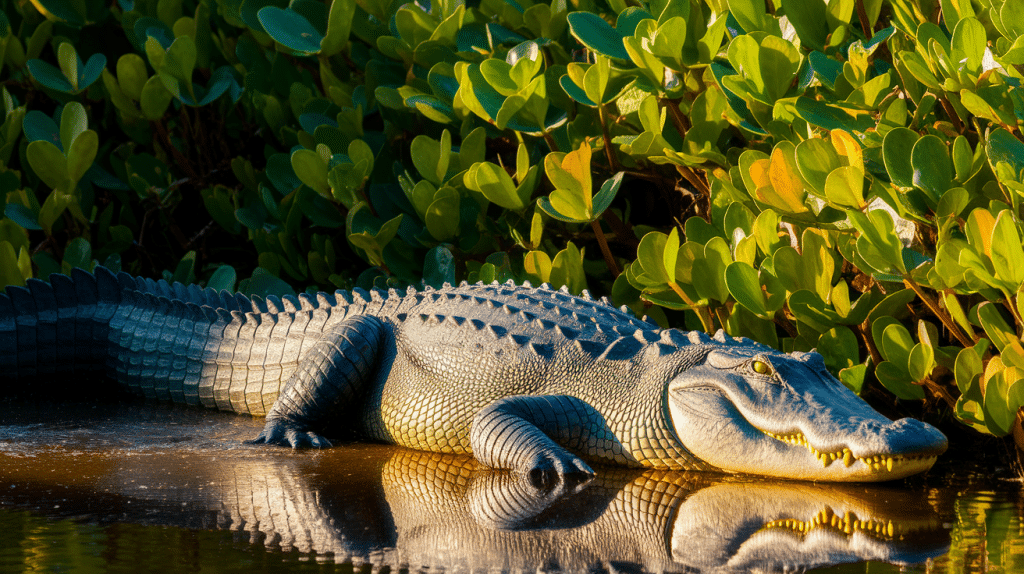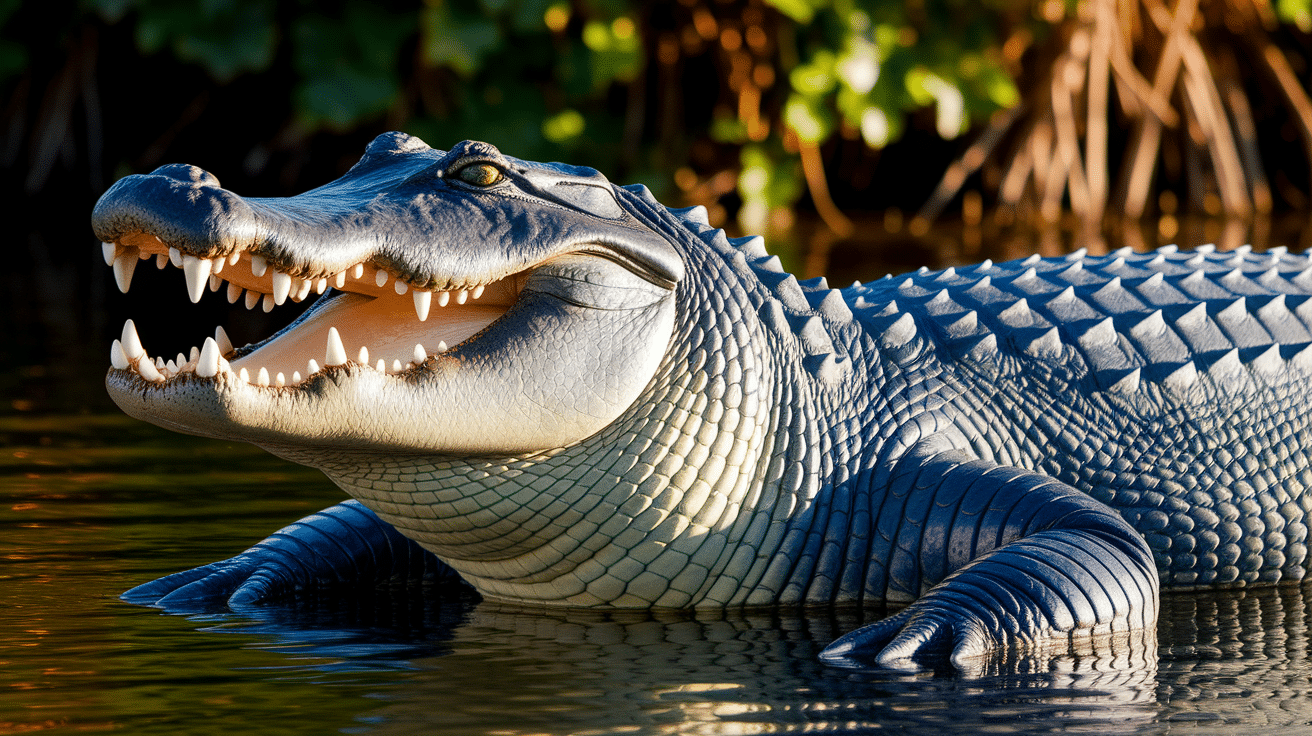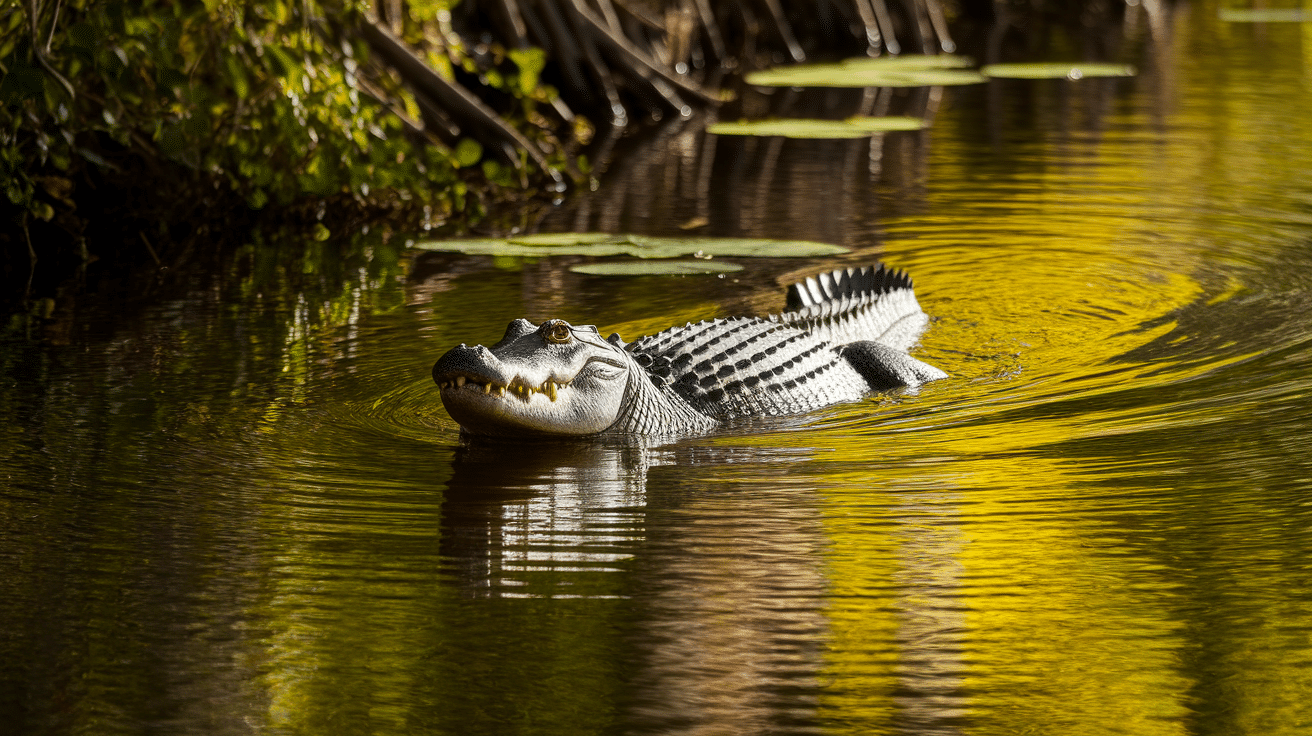Alligators are large reptiles characterized by their tough, scaly skin and powerful jaws, which are adapted for life in freshwater environments.
These creatures belong to the same family as crocodiles, but they have distinct physical features.
When you see an alligator, you’ll notice its broad, rounded snout and teeth that fit inside its mouth when closed.
This is unlike crocodiles, which display their teeth even when their mouths are closed. These reptiles call the southeastern United States and parts of China home.
This blog will address your questions about alligators’ tongues, their anatomy, and the differences between them and other reptiles, as well as share some fun facts about these gators.
The Doubt of Alligators’ Tongue
Yes, alligators do have tongues! Many people wonder about this aspect of these large reptiles. Their tongues are flat, wide, and attached to the bottom of their mouths.
Unlike human tongues, alligator tongues cannot move much or stick out. The most interesting thing about alligator tongues is their purpose.
They have a special flap at the back called a palatal valve, which stops water from flowing into their throats when they open their mouths underwater.
One might wonder, “Can alligators taste with their tongues?” They can! Their tongues have taste buds, but fewer than humans do.
They use these taste buds to check if food is worth eating.
When looking at photos of alligators with open mouths, that flat, yellowish structure at the bottom is the tongue. It serves important functions despite its limited mobility.
Anatomy of an Alligator’s Mouth
The mouth of an alligator features several notable characteristics that enable these reptiles to thrive in their environments.
Each part plays a specific role in how alligators feed, breathe, and sense their surroundings.
- Teeth: 74-80 sharp teeth arranged in rows
- Jaw muscles: Capable of exerting up to 2,000 pounds of pressure per square inch
- Palate: Separates the mouth from the nasal cavity
- Coloration: Yellowish or cream interior contrasting with dark exterior
- Sensory pits: Small holes on the snout that detect water pressure changes
Alligators use their strong jaws to grab and hold prey. The teeth are not meant for chewing but rather for gripping and tearing.
These mouth features have helped alligators survive for millions of years.
Their mouth structure is still similar to their ancient ancestors, showing this design’s lasting effectiveness.
How Alligator Tongues Differ from Other Reptiles
Alligator tongues have unique characteristics that set them apart from the tongues of snakes, lizards, and turtles.
| FEATURE | ALLIGATOR TONGUE | SNAKE TONGUE | LIZARD TONGUE | TURTLE TONGUE |
|---|---|---|---|---|
| Mobility | Limited, fixed to the floor | Highly mobile, can extend far | Varies by species, often quite mobile | Moderate mobility |
| Main Function | Helps with swallowing, blocks water | Collects scent particles | Collects scent, sometimes catches food | Helps with food manipulation |
| Shape | Broad, flat | Thin, forked | Various shapes, some forked | Thick, sometimes with projections |
| Flicking Behavior | None | Frequent | Common in many species | Rare |
| Taste Buds | Present but limited | Few to none | Present | Present |
What Happens if an Alligator Loses Its Tongue
Due to their protected position in the mouth, alligators rarely lose their tongues. The tongue stays mostly inside, safe from external damage.
If damage occurs, its effects depend on the extent of the damage. Minor injuries typically heal over time, whereas serious damage can impact feeding capabilities.
Tongue injuries can make swallowing more difficult and may affect the function of the palatal valve, which helps keep water out of the throat.
Fortunately, alligators rely mainly on their jaws and teeth for eating. They catch prey with teeth and often swallow smaller items whole, allowing them to feed effectively even with tongue damage.
Most alligators with tongue injuries can still survive in the wild, showing the remarkable adaptability of these reptiles.
Fun Facts About Alligator Anatomy
Beyond their tongues, alligators have many other body features that make them perfectly built for their environment.
- Alligators have eyes positioned high on their heads, allowing them to see above water while keeping their bodies hidden below the surface.
- An adult alligator can have up to 80 teeth at once. When they lose a tooth, a new one grows in its place. During its lifetime, an alligator may go through 2,000 to 3,000 teeth.
- The skin of alligators contains bony plates called osteoderms that function as natural armor, protecting them from attacks and injuries.
- Despite their bulky appearance, alligators can move with great speed. They can sprint at speeds of up to 35 miles per hour on land for short distances.
- In water, alligators can swim at about 20 miles per hour, making them effective aquatic hunters.
- Female alligators are usually smaller than males. An average male American alligator measures 11-12 feet, while females typically reach 8-9 feet.
Pro Tip: What makes these reptiles special? Their body design has stayed largely unchanged for millions of years because it works so well.
Conclusion
Alligators have amazing tongues that help them survive in water and on land.
These flat, wide tongues work differently from other reptiles’ tongues, but they do their job perfectly.
From blocking water to tasting food, alligator tongues show how these ancient creatures have stayed successful for millions of years.
Want to learn more facts about reptiles? Explore our other wildlife articles today!






















